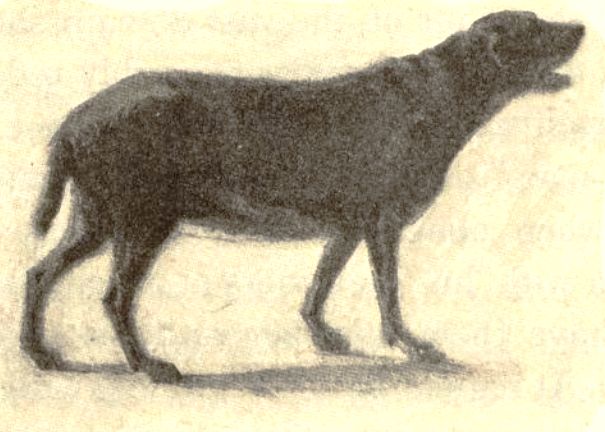
Trilby, from The Battle With the Slum by Jacob A. Riis.

Access to Cat Alley was between #301-303 Mulberry Street, at this very spot shown here (now a UPS store). Photo, P. Gavan
Cat Alley was not really an alley but rather a row of four or five eighteenth-century frame tenements in a back yard nestled between Mulberry and Crosby streets, midway between East Houston and Bleecker. Cat Alley was also not home to many cats, albeit quite a few strays did find their way into the yard.
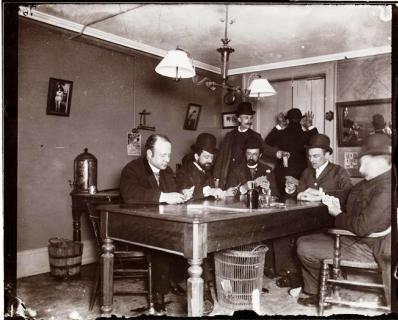
Trilby
spent a lot of time with the police reporters, shown here in their
office at 301 Mulberry Street. Photo by Jacob A. Riis, Museum of the City of New York Collection
The tenement houses of Cat Alley had once been rather stylish – in fact, one of them had been the parsonage of the church at 307 Mulberry (the San Salvatore Church at this time). In 1897, the front houses were occupied by newspaper offices for the reporters who covered the police and crime beat. The cramped and squalid back houses of Cat Alley were home to Irish and Italian immigrants.
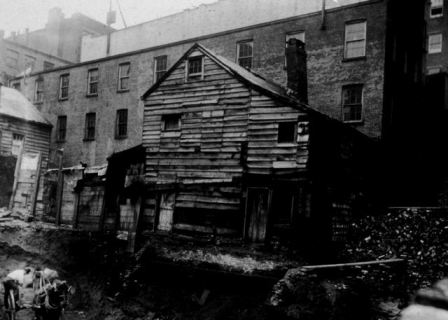
This
frame shanty on Bleecker Street, just northwest of Cat Alley,
represents a typical back house of the late 1800s. Barney lived in the
attic of a building like this, with a garret roof that made it
impossible to stand up straight.
From the moment she entered Cat Alley, Trilby was the alpha dog — and the only dog — among all the alley cats who rummaged through the garbage cans and all the reporters who took their daily walks in the yard. She’d spend her time wandering from one newspaper office to the other, poking her head in each doorway looking for some attention. If the reporters were too busy, she’d head over to police headquarters, where she would ride on the elevator and get off at each floor to visit the police chief and all the commissioners.
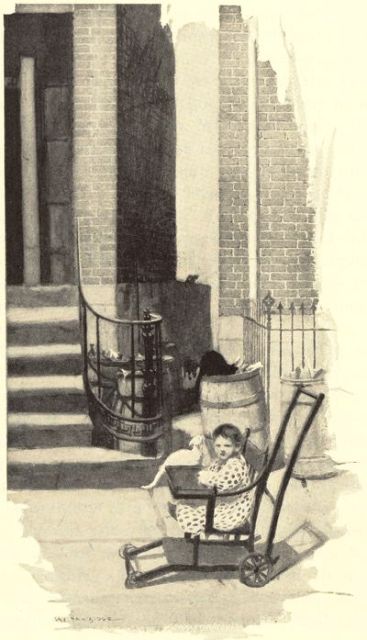
The entrance to Cat Alley was this narrow gap located between the brick walls of 301 and 303 Mulberry Street. From The Battle With the Slum by Jacob A. Riis.
One time, shortly after she arrived, Trilby ate about two pounds of meat and went running up and down the street barking and howling. She ran between the Gilligan homestead and John Sonntag’s liquor and cigar store at 40 East Houston Street and got stuck. After about two hours of trying to get her out, a reporter took off his coat and vest and dove between the two walls, emerging on the other side with Trilby in his arms.
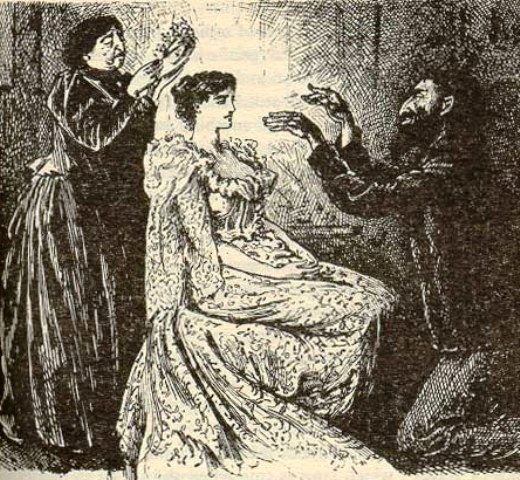
It was her “singing” that inspired the dog’s name. Trilby, a novel by George du Maurier, was one of the most popular novels of its time, published serially in Harper’s Monthly
in 1894 and in book form in 1895. In the novel, Trilby O’Ferrall, the
novel’s tone-deaf heroine, goes under the spell of a hypnotist and
becomes a talented singer.
The police started patrolling more heavily, which stopped the killing. Residents of Cat Alley also said they would execute the Marauders themselves if any more of their cats disappeared.
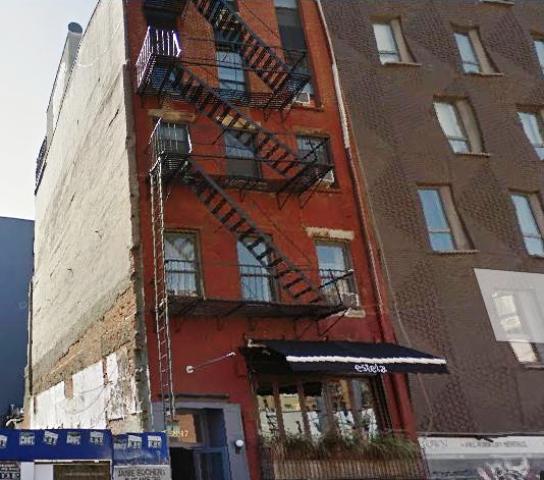
Katie
Gilligan, one of Trilby’s human playmates, lived at 47 East Houston
Street with her grandmother and grandfather, Beesy and Matthew; her two
uncles, Thomas and Edward; and her siblings Matthew, Mary, and Alice.
The four-story apartment was built in 1800 and is today home to Estela restaurant. Photo, P. Gavan
Barney the Cranky Old Key Man
Barney the Key Man, born Michael Coleman, was a Civil War veteran who lived in a decrepit attic on the third floor of an old frame tenement house in Cat Alley. The neighborhood kids called him Barney Bluebeard because, like Bluebeard of the seventeenth-century French folktale, he supposedly detested women, was always crabby, and had lots of keys. They’d get in his face and shout “Barney Bluebeard!” and then run away and hide in trembling delight as he leered and shook his key ring at them.
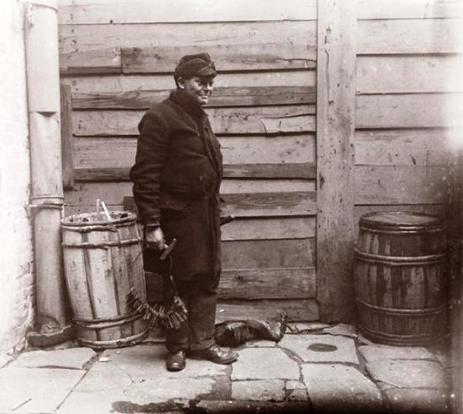
Barney
told people he was a locksmith, but in fact, many of the keys he always
carried with him were for the five or six bolts on the flimsy door of
his attic home. From The Battle With the Slum by Jacob A. Riis.
Over the years, as cobwebs and dirt accumulated in his room, neighbors told tall tales of Barney’s fabulous wealth, which they said he had concealed in cracks in the walls. In truth, Barney was reportedly receiving a veteran’s pension of $8 a month, but he never showed any signs of spending it — save for the dollar he would always give at the early mass on Sundays. The alley residents, however, loved to think that they had their very own miser with a hoard of cash stuffed in the garret roof.
The End of Cat Alley
In July 1897, a man from the Department of Public Works handed a resident named Mrs. Finnegan an eviction notice. The notice said that everyone in Cat Alley had to move out by the last day of July. The city had approved a plan to improve Elm Street by extending it south from Lafayette Place (then one block south of Astor Place) and combining it with the roadbeds of the former Marion and Elm Streets. The plan necessitated the demolition of Cat Alley and the Church of San Salvatore.
By the end of July, almost every resident of Cat Alley had packed up and moved. Even Trilby moved out, apparently adopted by the Gilligans or another family from the neighborhood. The buildings were sold at auction for $30 and prepared to be torn down. Still, Barney refused to go, for fear that if he changed his address, his monthly pension would be lost forever.
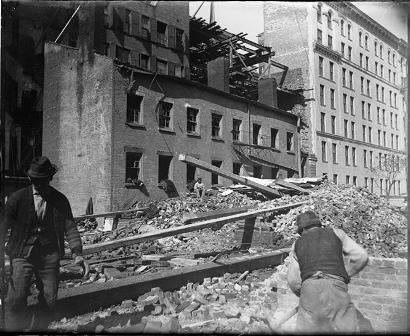
Construction workers demolish buildings along Cat Alley to make room for the widening of Elm Street in 1898. Museum of the City of New York Collections
By March 1898, there was nothing left of Cat Alley but bricks and dismantled frames — and old Barney. Although the contractor saved Barney’s building for last, he couldn’t hold out anymore. The first thing the workers removed was the attic roof. Then the workers moved inside, where they found a smoke-filled, dusty lair filled with cobwebs. The only furniture consisted of a broken stove, a bedstead, and two chairs.
On Barney’s last day in Cat Alley, a reporter from the New York Tribune climbed up the pile of bricks to visit him in his attic home. He found Barney removing about six locks and bolts from the door. “‘Tis a bad lot they have around here, and they always try to get in, thinking I’ve money,” Barney told the newsman.
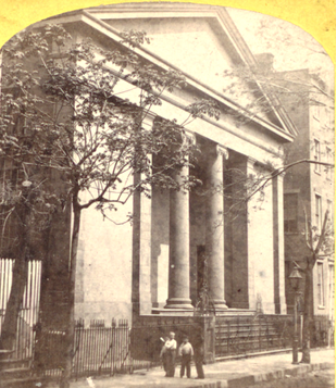
The
plan necessitated the demolition of the Church of San Salvatore at 305
Mulberry Street. In the 1850s, the building was home to St. Philip’s
Episcopal Church, he oldest African-American Episcopal parish in New
York. The structure also served as a barracks for militia and police
during the Draft Riots in 1863.
One Sunday afternoon in May 1898, Trilby came walking down Mulberry Street. She made the rounds of the newspaper offices, waiting patiently until everyone had spoken to her. From that point on, she started to appear every Sunday and holidays for another year or so.
I don’t know where Barney ended up, although it was reported that someone from the Grand Army of the Republic had come around to make arrangements to move him back to the home for disabled veterans in Virginia.
In 1905, the Board of Alderman adopted a resolution introduced by Alderman T.P. Sullivan changing the name of New Elm Street and Elm Street, to Lafayette Street. A small section of the original Elm Street near City Hall still exists today as Elk Street.

